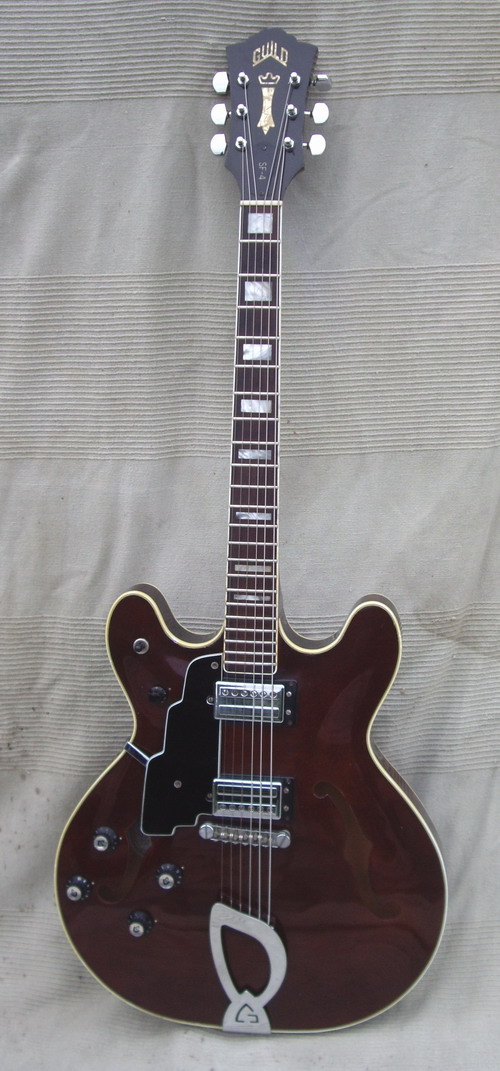

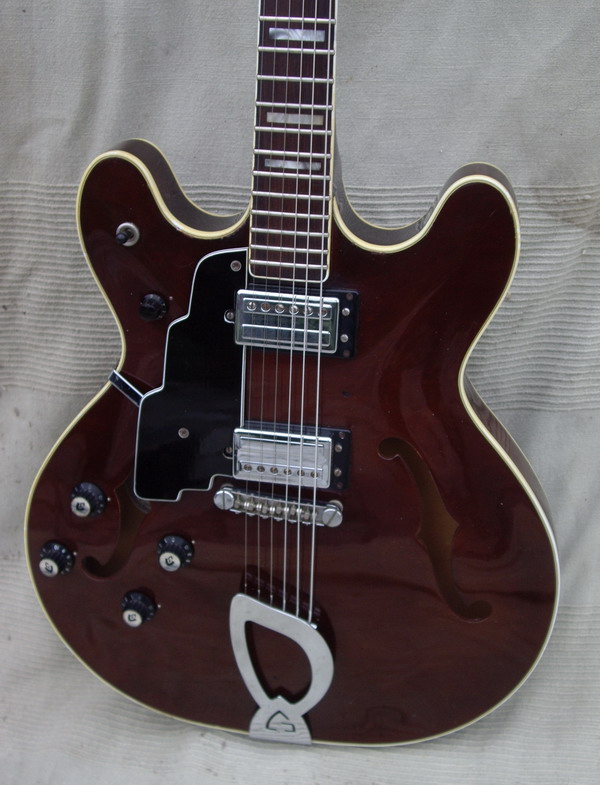

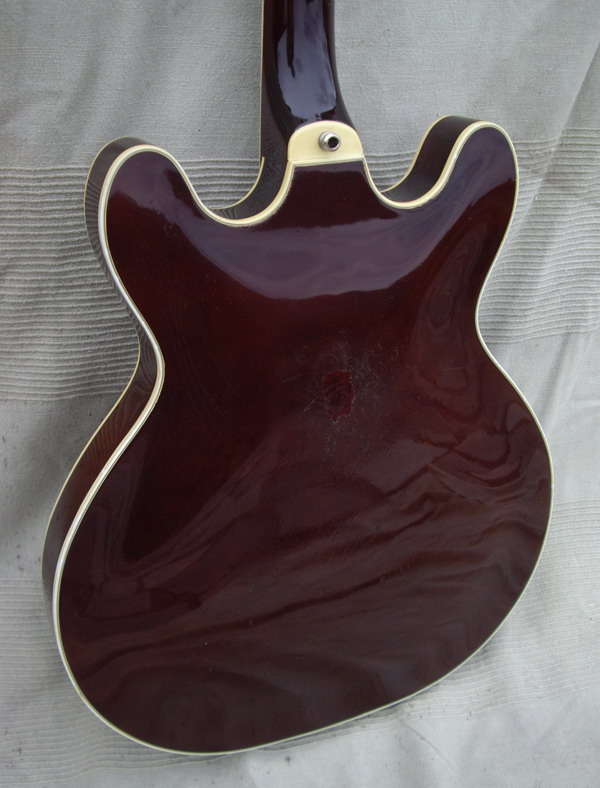
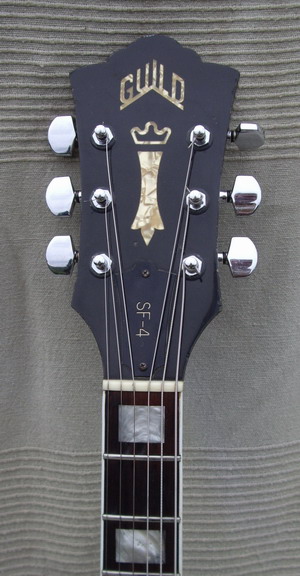

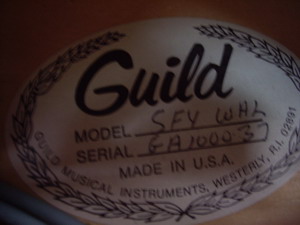
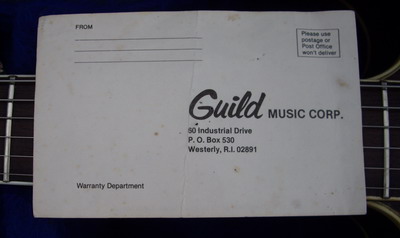
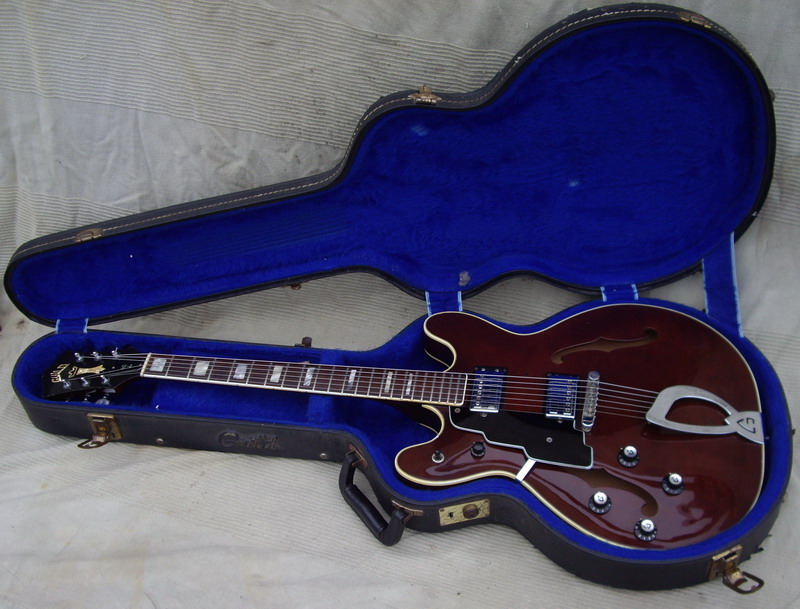
'79 GUILD STARFIRE SF4 WHL Lefty, Wine Red Very Rare, OHC EX code LH967
Maple body, 3 piece maple/mahogany neck with ebony fret board. Guild/Schaller tuners and an intonatable bridge with string spacing adjustment.
https://www.youtube.com/watch?v=lLXfgx95uNM
1950s
In the next few years, Guild makes their first flattops, followed by acoustic
archtops.
Models such as the X-175 Manhattan, M-75 Aristocrat, F-30, F-40, and F-50 are
introduced.
In 1956, production moves from New York City to Hoboken, NJ. It was during this
time period that Guild hires most of the people who are responsible for the
tremendous growth of the company during the 1960s, such as Bob Bromberg (general/plant
manager), Gilbert Diaz (final assembly), and Carlo Greco (luthier).
Due to Dronge's ties with the New York jazz scene, Guild's list of endorsees
include Johnny Smith, Don Arnone, Carl Kress, and Barry Galbraith, among others.
Guild's first collaboration with an artist (Johnny Smith) results in the Johnny
Smith Award model, which was made from 1956-1960.
1960s
Some very popular models came out of this decade, namely the Starfire models,
the Thunderbird, S-100 Polara, and Guild's first 12-string and bass guitars.
This is the decade in which Buddy Guy becomes synonymous with the Starfire IV,
Muddy Waters champions the Thunderbird, and Bonnie Raitt picks up her first
Navarre F-50, which is a new version of the F-50 with rosewood back and sides.
Guild also begins making their first classical guitars, inspired by Carlo Greco
and named after Al Dronge's son Mark.
After Guild parts ways with Johnny Smith, they developed signature models with
George Barnes (George Barnes AcoustiLectric, "Guitar in F"), Duane Eddy
(DE-400), and Bert Weedon (Bert Weedon model).
In 1966, the company is sold to the Avnet Corporation, and production moves from
Hoboken to Westerly, RI. The first guitar to come out of this factory is an M-20
in 1967.
In 1969, Richie Havens wows the world when he opens the Woodstock Festival in
1969 with his Guild D-40. The D-40 and D-50 go on to become mainstays in the
Guild line.
1970s
In 1972, Al Dronge dies in a plane crash, marking the end of an era for the
Guild Guitar Company. Leon Tell assumes Presidency in 1973.
Guild's 12-string and jumbo-sized guitars pick up steam; on the other hand,
Guild overhauls their entire range of solid-body electrics, including the basses.
These models include the M-85 bass, JS Bass I & II, S-100, S-300, and new
solid-body versions of the recently re-issued M-75 Bluesbird, called the M-75GS
and M-75CS.
Guild also designs and produces the first dreadnought guitar featuring a cutaway
(the D-40C), and makes the first dreadnought-shaped 12-string guitars (G-212,
G-312). During this time period, the "G" designation for a dreadnought guitar
crops up, although why it is introduced remains a mystery.
Little known fact: at the beginning of 1970, Jimi Hendrix purchases a
left-handed F-212 12-string model from the infamous Manny's Music in New York
City.
1980s
With the popularity of the heavy metal and hard rock
scenes, Guild introduces many solid-body guitars and basses with body shapes and
design features aimed to suit the style of these players. Popular models from
this time include the X-82 Starfighter, S-80 Flyer, X-79 Skyhawk, SB-66E
Bladerunner, and the SB Pilot basses.
On the acoustic side of the business, Guild partners with George Gruhn (famed
American guitar historian and owner of Gruhn's Guitars in Nashville) to create a
new range of flattop guitars, including the D62, D64, D66, F42, F44, and F46.
Guild also continues to expand on their existing range of flattops.
Artist models from this decade include the Hank Williams, Jr. (also called the
G-45), and the DE-500, a reissue of Duane Eddy's original guitar.
In 1983, the Talking Heads' groundbreaking live concert "Stop Making Sense" is
filmed. Lead singer David Byrne closes out the show playing a solid-body Guild
on "Crosseyed and Painless."
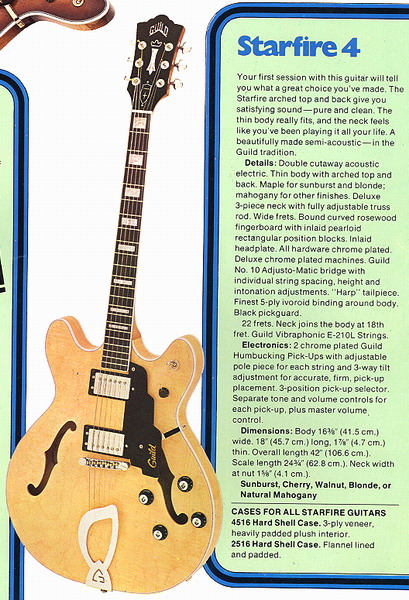
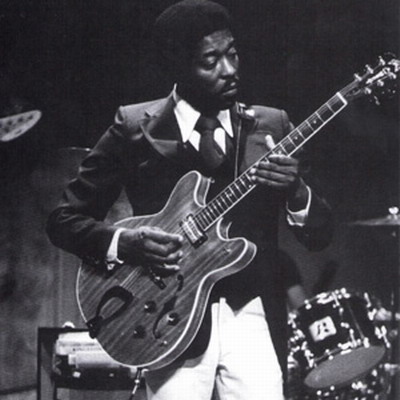
Buddy Guy Guild Starfire4
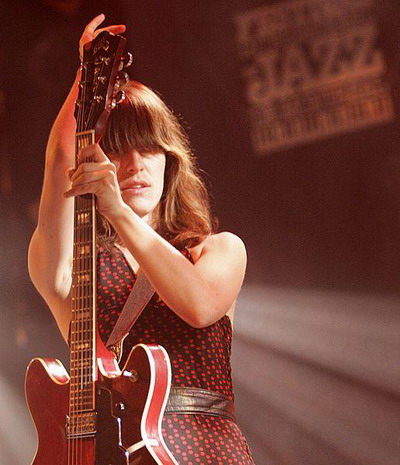
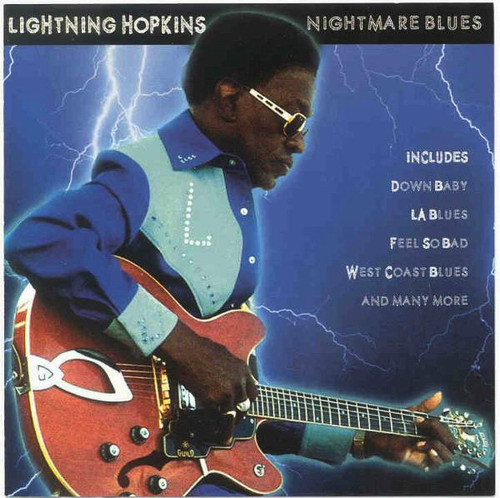
Lightning Hopkins with Starfire IV
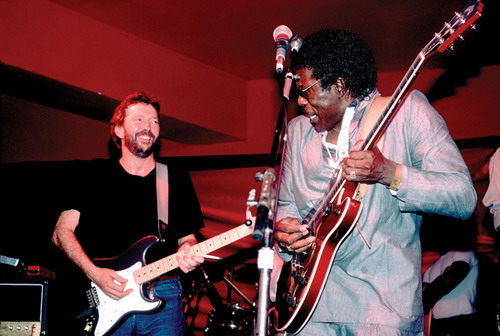
Buddy Guy